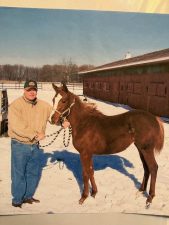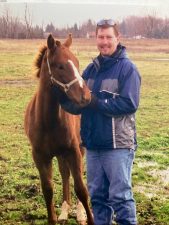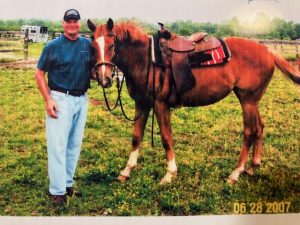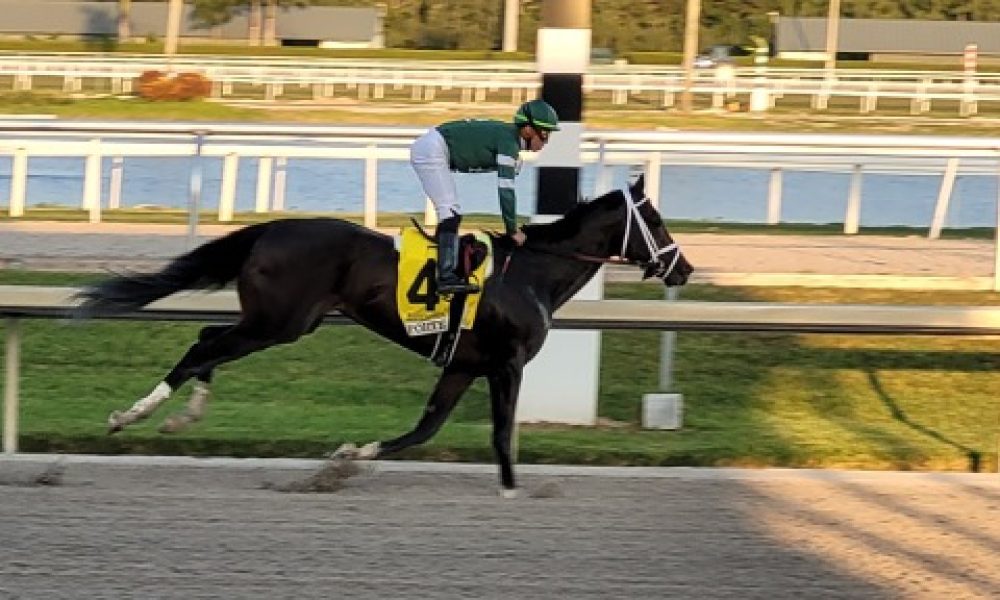Well, the days have once again softened and carried us into spring, meaning that we’re getting close to Triple Crown season and the Kentucky Derby. This year’s Derby will be run on Saturday, May 6th, and the field is very nearly set for the 149th edition of the Run for The Roses. The top four horses in this year’s field, by points, are Forte, Practical Move, Angel of Empire, and Tapit Trice. Forte has already won more than $2.4 million, including a win in this year’s Florida Derby, and is sired by Violence, who stands for $25,000 a cover. Practical Move has won over $884,000, notably with his victory April 8 in the $750,000 Santa Anita Derby, and is by Practical Joke, who stands for $35,000.
Angel of Empire has banked over $1 million, including a win in the Arkansas Derby on April 1, and is the progeny of Classic Empire, who stands for a comparatively reasonable $17,000 per cover. And then there’s Tapit Trice, by the top sire Tapit, who commands $185,000 for a single cover. Tapit Trice has already won over $883,000 to date, with the largest purse coming from his win, also on April 1, in the prestigious Blue Grass Stakes at Keeneland.
Todd Pletcher, 2022’s top trainer, trains both Forte and Tapit Trice, while 2021 top trainer Brad Cox conditions Angel of Empire. Up-and-coming trainer Tim Yakteen, who is noted for training horses for Bob Baffert, is responsible for Practical Move.
Other horses of interest in this year’s Derby field include Lord Miles, who got into the Derby with his shocking victory at 59-1 in the Wood Memorial but has to date won only $427,000. Interestingly, the Lord’s sire is two-time American horse of the year Curlin, who stands for a whopping $175,000 per cover. Lord Miles comes to the race via Saffie Joseph, Gulfstream’s leading trainer.
Another horse of interest is Derma Sotogake, from Japan, who has already won over $1.1 million in his native country and looked outstanding in doing so, but truthfully, you can probably make at least a decent case for the chances of virtually any horse in the field of twenty. One need only look back to last year’s Derby, won by 50-1 longshot Rich Strike, to realize that, while longshots tend to be longshots for a reason, if you’re in the field, you’ve got a chance. All of which helps make America’s premier race so fascinating to fans and bettors alike.
I’ve written previously about my first attempt at breeding with our mare Martha D. Even though we never got a foal of hers to race, we decided to try breeding again, this time with our other retired mare, the eight-year-old Strike Number One. In her career, Striker, as we informally referred to her, raced 70 times, winning twelve, placing five, and showing fifteen. She gave us so many thrills, and twelve beautiful winner’s circle photos. She was a medium-to-small mare, a plain brown bay filly, but gritty and very sound, as her 70 starts showed.
We weren’t having any Derby dreams, mind you. Glory can be intense, not to mention expensive. We just wanted a foal. So we chose as stud a very inexpensive Ohio stallion named Lived It Up. Fortunately, Striker proved fertile, got pregnant quite easily, and delivered us a cute chestnut filly. Striker was never the friendliest horse when racing; she didn’t take well to being handled or groomed. Come race day, she was all business. Thus, we couldn’t help but wonder how she’d be as a mom – would she display any of her race-day edge? On the contrary, she took to it readily, and was a fabulous and caring mother to her young daughter. So, a bit later, we gave her another go with Lived It Up.
My partner Anne was a kind and generous person and allowed me to name the new foal. I had decided before the birth, while Striker was still in foal, to honor my late parents, and so the moniker was to officially be Umpus and Marge. Umpus had been my father’s nickname in World War II, and my mother’s name, very simply, was Marge. We decided to base the new arrival’s barn name on his or her sex, so when she proved to be a lovely chestnut filly, she naturally became Marge.
About a year later, on April 1st, Striker delivered a second chestnut filly, and I was once again offered the privilege of naming her. This second healthy foal became Brads Number One, a name chosen both to honor my son Brad and to establish a direct connection to Striker. Because this foal was female, and born on the day that she was, her barn name rather naturally became April, a name everyone felt appropriate. We were very fortunate – April went on to become the sweetest filly we ever

The author and Marge
had in our stable.
A year or so later, Marge was about to become a two-year-old. Our stable manager, caregiver, trainer, and all-around horse whisperer JoAnn had begun putting Marge through early schooling lessons. April was now a yearling and growing like a weed, and Striker was pregnant for the third time.
By then, one of my favorite things had become taking the trips to the farm, loaded down with bags of carrots, just to see our fillies and their mom progress. Often, I’d find them grazing in the back pastures, almost out of sight. My usual habit was to yell and shake the bags of carrots I’d brought, and once they heard the carrots rattling against the bags, all of them would come running in a pack to the fence for their crunchy orange treats, neck rubs, and butt scratches. Striker knew my gifts from her days at the track and always got there first, but her daughters were never far behind. For two years, these majestic animals brought me more joy than I ever could have imagined – and the babies hadn’t even gotten to the track yet!

Brads Number One, with Brad
It wasn’t long before the two-year-old Marge and the one-year-old April were joined by a new sibling, another lovely chestnut from Striker, this time a colt. This time it was Anne’s turn, with JoAnne’s help, to name the new foal, and, since the Jockey Club only allowed 16 letters to be used in naming a thoroughbred racehorse, I was touched and moved that their decision was to call our new colt Strikemoutbernie. (The spelling, incidentally, stems from the Jockey Club’s rule that any thoroughbred’s name could only, at the time, have a maximum of 16 letters. They’ve since bumped that limit up to 18, as of 2015, but it’s an inflexible rule otherwise, which is why thoroughbreds are occasionally given names like Atswhatimtalknbout, Imawildandcrazyguy, and Sweetnorthernsaint. And Strikemoutbernie.)
Three successful foals in a row by our beloved mare had us all hovering high on cloud 9. As we watched them grow and develop, we continued to wonder if they’d be runners when they hit the track. Before we made the decision to breed our own horses, knowing that the process would take over 3 years from pregnancy, through foaling and training, and then to the track – and that only if all went well – we also decided we wanted a horse who was ready to race now. The racing thrills of Martha D and Striker had us ready to get in the game again, which naturally involved us in purchasing another race-ready mount, either through a private sale or claiming one entered at a level we could afford.

Strikemoutbernie, with the author
You might remember the first horse we ever owned, Monsieur Leclercq, the gray horse we owned in partnership with the Frenchman from California. Well, guess what – right when we’d decided to start looking for a runner, he happened to have another gray horse that had already run fourteen times at Turf Paradise in Arizona, with a win, a place, and a show among those fourteen starts.
This gray had been running for a claiming price of $3,500, so my friend offered to partner with us for that price if we would take the horse to Ohio and race him there. This was essentially exactly the sort of situation we were looking for. The new gray horse was small but well-built, a sound, fast runner, and we thought he might give us some thrills in the interim before our breeding venture bore fruit. And so it was that we acquired the four-year-old gray California-bred gelding by the decent sire High Brite out of the mare Jackie’s Valentine, a combination which inspired my French partner to name him Brite Valentin. As our partner told us in his mellifluous accent when we wondered why he’d gone with ‘valentin,’ “that is the correct French spelling.”
We thus decided that the barn name for this new horse of ours had to be No E. After all, what else could it have been, really?
To be continued…



